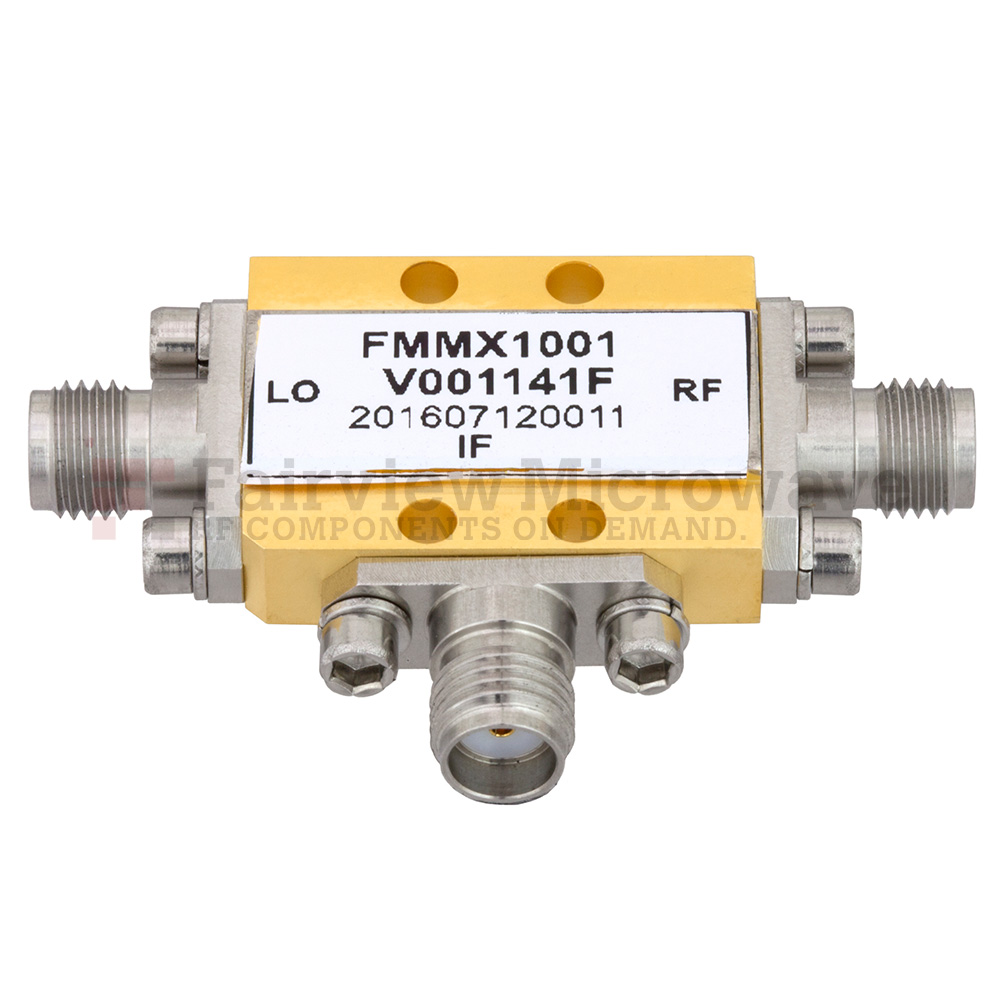RF mixers are frequency conversion devices that are composed of nonlinear elements that allow for frequency “mixing” of RF, intermediate frequency (IF), and local oscillator (LO) signals. There are two main functions of RF mixers: either upconversion or downconversion. Upconversion is the process of combining two input signals, the IF and LO, to generate multiple combinations (the sum, difference, and harmonics) of the two input signals that are the RF signals. Downconversion is the reverse process of upconversion, where the two input signals, RF and LO, are combined to yield the IF signals.

What Are the Key RF Mixer Performance Parameters or Figures-of-Merit?
One of the key performance parameters of RF mixers is the conversion loss, or conversion gain. RF Mixer conversion loss is the difference of RF signal strength between the RF and IF ports, typically calculated in power with decibel (dB) or decibel per milliwatt (dBm). There are many factors that contribute to the conversion loss of a mixer, such as balun mismatch, series resistance of the diode, line losses, and mixer imbalance. Conversion loss, or conversion gain is critical as it describes the output signal power level based on the input signal strength. In general, the term conversion loss is used for passive RF mixers who exhibit a loss of signal energy during frequency conversion where active mixers may provide a gain to the signal energy. In other words, the conversion loss parameter helps designers estimate the signal energy at the inputs of a mixer to return the desired output signal energy.
Another key RF mixer figure-of-merit (FOM) is noise figure (NF). This is the added noise that is contributed to the output signal from the RF mixer and is commonly approximated with the conversion loss. Depending on the type of mixer, there can be both large signal NF and small signal NF, where the large signal NF is the ratio of the input signal-to-noise ratio (SNR or S/N) to the output SNR. It is important to note that RF mixers tend to exhibit higher NF when stimulated by relatively high-level RF signals. This can be problematic as a mixer may be performing frequency conversion on several frequency channels at the same time and a high RF signal level in one channel tends to raise the NF for all channels.
Active Versus Passive Mixers
Active mixers are mixers that have an external power source and design that enables the mixer to provide a gain to the conversion signal. Passive mixers have no such external power source and exhibit a conversion loss of several dB (greater than 4.5 dB, typically). However, active mixers also tend to exhibit higher NF than passive mixers with comparable linearity. Depending on the desired output signal level, it may be desirable to use an active mixer, unless the desired signal energy is far greater than the conversion gain capability of the active mixer. In this case, it might be preferable to use a passive mixer with an added amplifier, as opposed to an active mixer and additional amplifier. The passive mixer and amplifier combination may result in a lower added NF and may also possibly be more energy efficient depending on a variety of factors.


